I'm having trouble figuring out how to ensure particles aligned in a square will always be placed in the middle of the screen, regardless of the size of the square. The square is created with:
for(int i=0; i<(int)sqrt(d_MAXPARTICLES); i++) {
for(int j=0; j<(int)sqrt(d_MAXPARTICLES); j++) {
Particle particle;
glm::vec2 d2Pos = glm::vec2(j*0.06, i*0.06) + glm::vec2(-17.0f,-17.0f);
particle.pos = glm::vec3(d2Pos.x,d2Pos.y,-70);
particle.life = 1000.0f;
particle.cameradistance = -1.0f;
particle.r = d_R;
particle.g = d_G;
particle.b = d_B;
particle.a = d_A;
particle.size = d_SIZE;
d_particles_container.push_back(particle);
}
}
the most important part is the glm::vec2(-17.0f, -17.0f) which correctly positions the square in the center of the screen. This looks like:

the problem is that my program supports any number of particles, so only specifying

now my square is off center, but how can I change glm::vec2(-17.0f,-17.0f) to account for different particles?